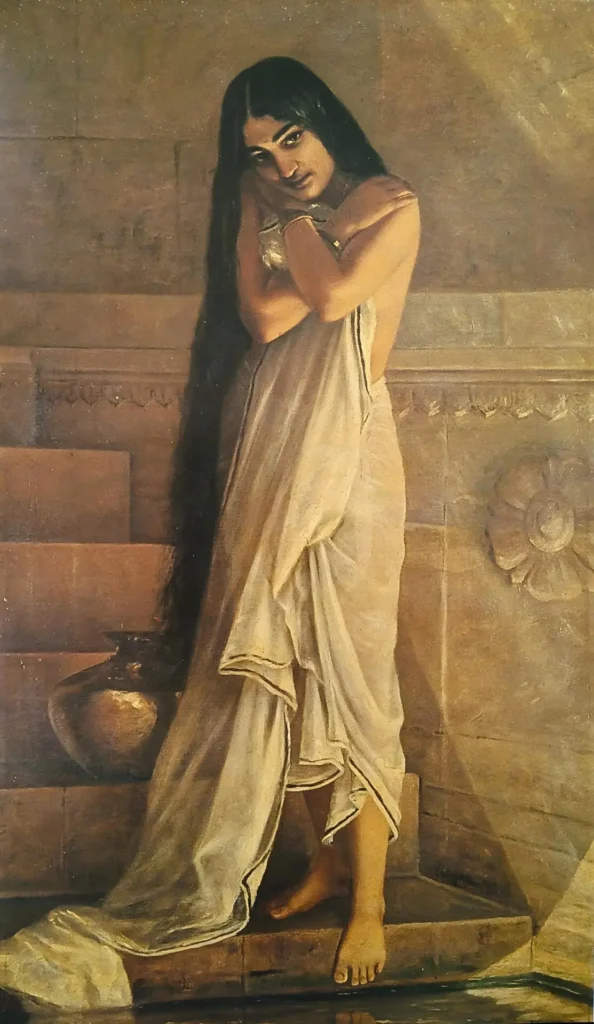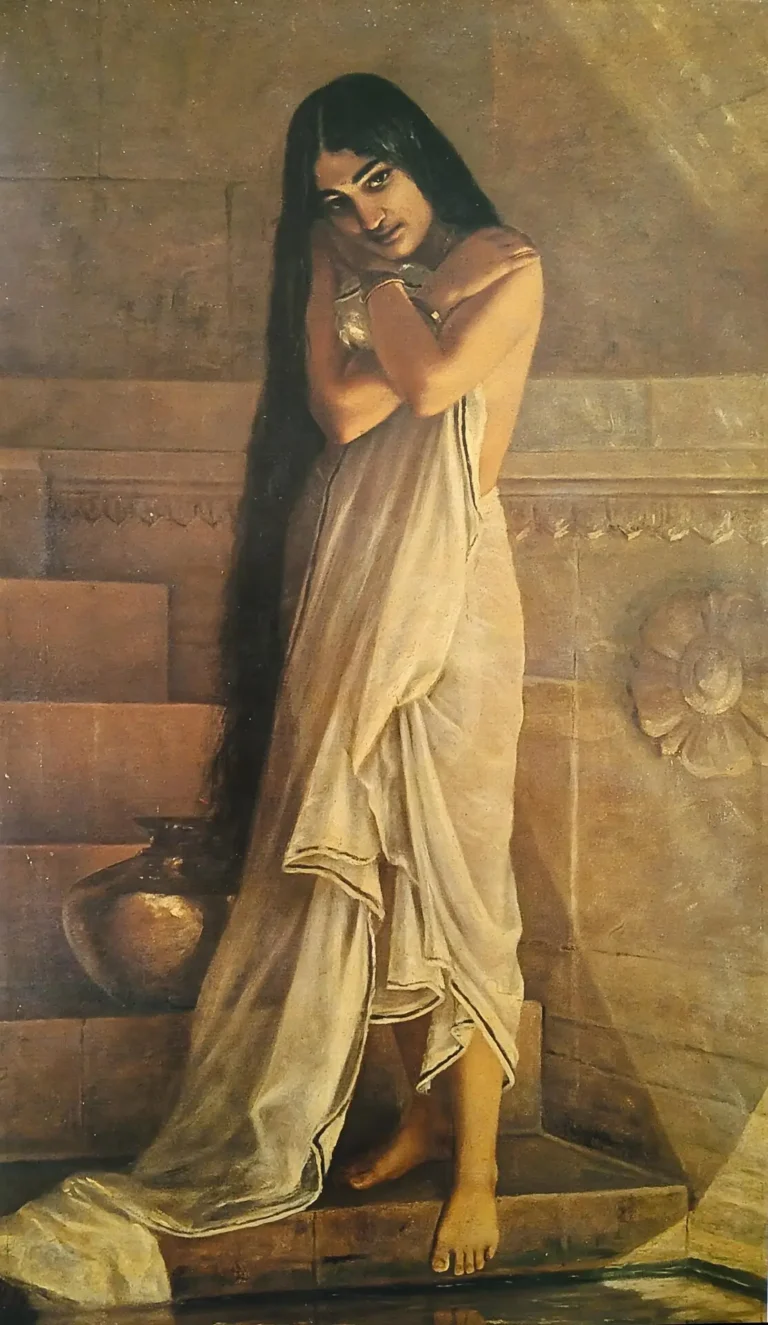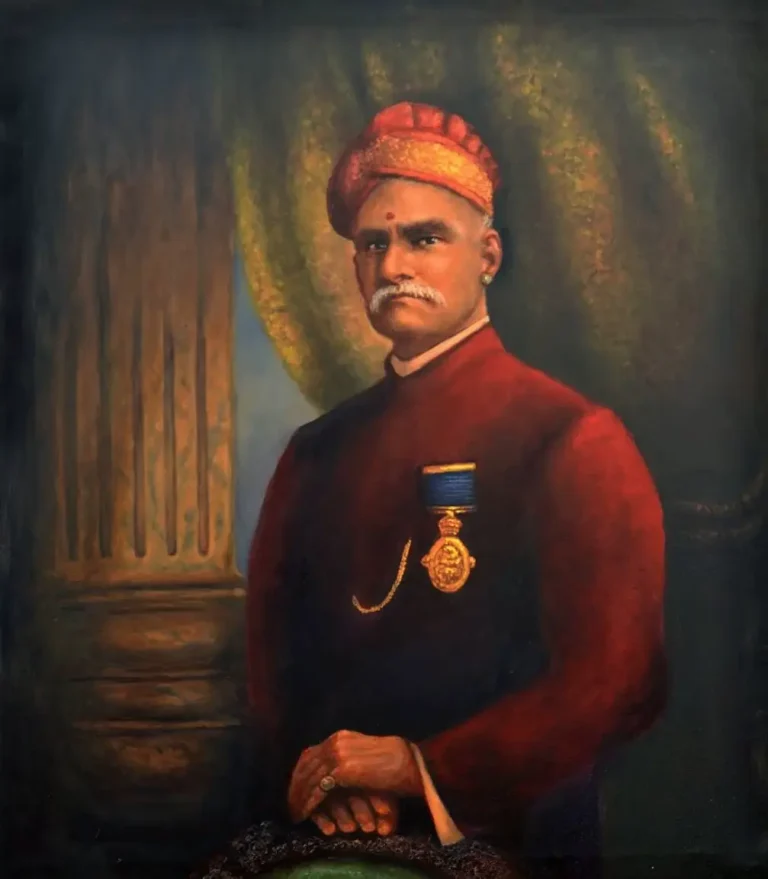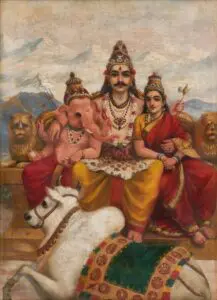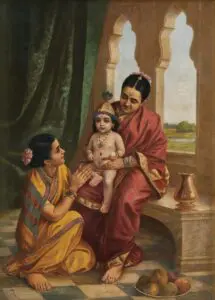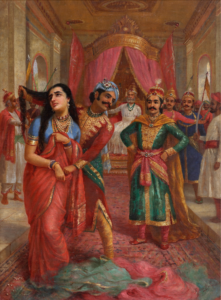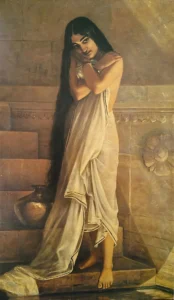Warasyar Woman
The Warasyar Woman is a stunning painting by the celebrated Indian artist Raja Ravi Varma, created in the late 19th century. This artwork portrays a woman draped in traditional Indian attire, embodying the quintessential qualities of Indian femininity with a fair complexion and expressive features. It reflects Varma's unique ability to blend European techniques with rich Indian cultural themes, making his works a vital part of India’s artistic narrative.
Late 19th Century
About the Artwork
Raja Ravi Varma, an iconic figure in Indian art, created the Warasyar Woman during a remarkable period of transition in Indian aesthetics. His ability to fuse the intricacies of European painting techniques with Indian motifs established a new art form that resonated with the people of India. This specific painting captures a moment of grace and poise, illustrating a woman enriched by tradition yet portrayed with a modern sensibility. It stands as a testament to Varma’s genius in redefining the portrayal of women in Indian art, establishing them as central figures imbued with dignity and charm. Varma’s artworks have since influenced generations of artists and remain celebrated for their depiction of Indian heritage.
Did You Know
Raja Ravi Varma is often credited with bringing Indian art to the mainstream, influencing both classical and modern interpretations of Indian mythology. His unique style has inspired numerous artists and continues to be celebrated in contemporary art culture.
The Warasyar Woman reflects traditional Indian values while simultaneously incorporating influences from Western art techniques. This blend has made Varma’s works pivotal in the progression of modern Indian art, constantly bridging cultural divides.
In Warasyar Woman, Varma’s portrayal of women with fair skin and doe-eyed expressions aligns with the prevailing ideals of beauty in Indian society at the time, a theme he repeatedly explored in his body of work, solidifying his role as a chronicler of feminine grace.




